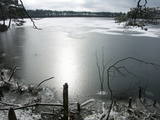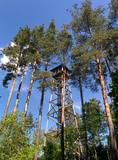| Нo | Название | Описание |
|---|---|---|
|
Лавка пирожных находится в центре Гулбене. В предложении всевозможные кондитерские изделия домашнего производства из натурального сырья, свежевыжатые соки, ароматные чаи и кофе, а также салаты и закуски. В «Гардумсе» можно попробовать особые лакомства и блюда Гулбенского края. |
||
|
На ферме проводятся эдукационные занятия, во время которых посетителям демонстрируют животных, содержащихся на ферме, уход за ними, знакомят с происхождением пород. Для посетителей имеется возможность самим собрать яйца или научиться правильно сидеть в седле, а также покататься верхом. |
||
|
Маршрут пролегает от столицы Риги Латвии, через красивые сельские территории до Каунаса, который является вторым по величине городом в Литве. Ландшафтный сад и парк Клугов славятся бегониями. В Добельском садоводческом институте имеется коллекциями из более чем 200 видов и сортов сирени. Сад красивых и практичных идей может похвастаться своей коллекцией хвойных деревьев, а гостям предлагают порошки из пряных трав, сушеные ягоды и фрукты. «Чай гномов» - одно из самых больших хозяйств по выращиванию лекарственных трав в Латвии (выращивают эхинацею, ноготки, ромашку и др.). В Кроньауце в период цветения вы можете насладиться красотой пионов в коллекционном саду Андра Беркина и великолепном тюльпановом саду Виестардов. Следующая остановка находится в фермерском хозяйстве «Дроши веселс», которое производит травяные мази и выращивает овощи. Посетив Домик перечной мяты, вы сможете насладиться мятным чаем, печеньем, медом с мятой и мятным сиропом. В усадьбе Бланкенфельде вы можете осмотреть уникальную коллекцию колоколов, насладиться натуральными соками, сиропами и маринованными огурцами, произведенными в усадьбе. В Йонишкисе посетите красно-белую Йонишкскую синагогу, Церковь вознесения Святой Девы Марии и Музей истории и культуры Йонишкиса. Усадьба Якишкяй не отремонтирована и сохранила оригинальные элементы, такие как, например, печи, ставни, лестницы, двери. В Балтийском музее выращивают около 30 различных видов и сортов растений. В Шяуляйском ботаническом саду созданы три сада старинных растений в соответствии с сельскими традициями соответствующего периода - довоенного, межвоенного и послевоенного. Бурбишское поместье со своим ландшафтным и скульптурным парком организует ежегодный фестиваль тюльпанов. В Клебонишкяйский музее сельских домов можно осмотреть аутентичные хозяйства Аугштайтского региона. Поместье Байсогалас называется королевским, поскольку когда-то оно принадлежало великому князю литовскому, и его парк площадью 12 гектаров является одним из самых красивых в Литве. В музее известного литовского поэта Мачюлиса-Майрониса есть два красивых культурно-исторических сада. Домашние "счастливые блюда" можно приобрести в хозяйстве Гарси Тила, где также можно отправиться на прогулку по их 100-летнему фруктовому саду и осмотреть сад с травами. Литовский институт садоводства занимается как научной, так и экспериментальной / производственной деятельностью. Здесь вы можете приобрести саженцы, а также сезонные фрукты и овощи. В хозяйстве Тадаса Иванаускаса у парка Обелинес вы можете увидеть коллекцию из 300 видов и сортов растений, включая самое старое дерево - гинкго двулопастный. В Каунасе вы можете увидеть самую старую яблоню в Литве – ей почти 360 лет, она 8 метров в длину, 285 см в диаметре на высоте около 1,3 метра. В Каунасском ботаническом саду университета Витаутаса Великого растут уникальные растения, обустроена самая большая оранжерея в Литве, старинные литовские клумбовые растения представлены по разным растительных группам в соответствии с ботанической классификацией. Маршрут заканчивается в Каунасе, который был столицей Литвы с 1920 по 1939 год. |
||
|
Дом шеф-повара находится в бывшем Лигатненском родильном доме «Вильгельма». Он предназначен как место для шеф-поваров, а также других заинтересованных лиц, чтобы делать, творить и экспериментировать. Автор идеи - шеф-повар Эрикс Драйбантс. Цель этого места - побудить вас исследовать и открывать уникальные вкусы и впечатления нашего региона. Дом шеф-повара поддерживает философию медленного питания, а также окружающих фермеров и производителей. Рядом с домом находится сад наблюдателей за природой, где есть детская площадка «Гнездо на дереве», увеличительное стекло для более близкого знакомства с природными элементами и площадка для пикника с камином. В саду есть травяной сад, разбиты фруктовые деревья и ягодные кусты, но в центре его, рядом с Площадью наблюдения за птицами, находится Луг бабочек. |
||
|
Relatīvi grūti pieejama un cilvēka mazskarta teritorija kūdrā izstrādātajā Cenas tīreļa ziemeļaustrumu daļā, kur saglabājušies augstā purva biotopi ar purva ezeriem, kas kopumā veido nozīmīgu vietu ligzdojošām un migrējošām zosveidīgo, tārtiņveidīgo u.c. putnu sugām. Teritorija nav piemērota (un nav vēlams) tūrisma aktivitātēm.
|
||
|
В уютной атмосфере ресторана можно попробовать блюда, приготовленные из даров литовской природы. Здесь также можно полюбоваться экспозицией старинных приборов для приготовления пищи, а также оборудования для выпечки шакотиса. |
||
|
Семейный ресторан в 12 км от Талси, где можно попробовать традиционные блюда латышской кухни. |
||
|
Недалеко от лыжной базы "Žagarkalns" в Цесисе, на берегу Гауи, база для отдыха водных туристов с местами для палаток и трейлеров. Территория достаточно широкая, чтобы гости не беспокоили друг друга. Отдельные домики для торжеств, баня. Прокат лодок и велосипедов. Зимой-лыжные трассы и сервис. |
||
|
Находится в 0,1 м к югу от развалин Гробиньского замка, на правом берегу Гробиньского водохранилища. Гробиня является одним из древних заселенных мест Латвии, так как в период с VII по IX вв. (согласно другим источникам IV – Х вв.) здесь находилась крупная известная на территории теперешней Балтии скандинавская колония торговцев и воинов. Переселенцы-колонисты из Готланда и Швеции образовали колонию на холме правого берега судоходной в то время реки Аланде Скабаржкалнсе. Считается, что именно здесь находился упоминаемый в хрониках IX века куршский Юрпилс (Seeburg). Происхождение топонима (Скабаржкалнс) связывают с тем фактом, что в Курземе грабы в свое время назвали гробами. Скабаржкалнс - древнее городище куршей, рядом с которым найдены остатки древнего города. Исторические источники свидетельствуют о том, что в 1263 году замок куршей без боя был отдан рыцарям Ливонского ордена для сожжения. С противоположным берегом городище соединяет небольшая деревянная переправа. |
||
|
Uzcelts apkaimes augstākajā vietā – Ančupānu meža kalnā, kuru vietējie dēvē par „Bāku”. No 26 m augstā torņa redzama ļoti plaša panorāma ar Rēzeknes pilsētas namiem, baznīcu torņiem un apkaimes mežu masīviem, kas mijas ar lauksaimniecībā izmantojamām zemēm. Blakus tornim – atpūtas vieta. |
||
|
В 1242 году на этом месте немецкий орден построил каменный замок, от которого до сегодняшнего времени сохранились только отдельные фрагменты стен и свод подвала, в котором по предварительной договоренности можно заказать дегустацию вина местного производства. В более поздние времена здесь находился замок герцога Курземе, который был разрушен во время Северной войны (1701 год). В результате проекта реконструкции парка созданы деревянные мостки, информационные стенды, построена беседка и фонтан. В парке возведены отдельные скульптуры и их группы (22 скульптуры, автор Ливия Разевска). |
||
|
Трактир Kaali на протяжении долгих лет предлагает своим гостям лучшие блюда и напитки эстонской и сааремской кухни, приготовленные из местных продуктов, а также знакомит с культурой и историей острова. Посетители музея и метеоритного кратера Каали могут здесь вкусно перекусить. |
||
|
Построенная около 1625-го года, она на протяжении нескольких сотен лет была главным святилищем общины суйтов, опорой ее духовности и идентичности. В 1882-м году церковь была расширена в сторону, что придало ей теперешнюю форму креста. Здесь вы можете осмотреть работы голландского резчика по дереву Иоганна Мертенса. Церковный орган, созданный в 1893-м году в Екабпилсе, был построен Ф. Вейзенборном. Под церковью находится замурованное родовое захоронение Шверинов. |
||
|
Atrodas Tirgoņu un Zāļu ielas krustojumā (Zāļu ielā 12). Interesanta ar faktu, ka šī ir vienīgā padomju laikā uzbūvētā (1948. g., pēc citiem avotiem – šajā gadā atjaunota) Latvijas baznīca. |
||
|
Atrodas 200 m ziemeļaustrumos no akmens tilta pār Tebru. Ūdensdzirnavu komplekss celts 18. gs. beigās – 19. gs. sākumā uz Tebras upītes, uzpludinot Dzirnavdīķi. Blakus dzirnavām atrodas 19. gs. beigās celtā Aizputes muižas alusdarītava, apvienojot divas vecākas Pilsmuižas saimniecības ēkas. |
||
|
Действительно вкусный яблочный сок. Биологическое хозяйство, выращивающее яблоки и облепиху. Посетители могут осмотреть хозяйство, сады, производственные помещения и оборудование, а также продегустировать и купить соки. |
||
|
Lēdurgas dendroparks ir viens no bagātākajiem parkiem Latvijā. Parkā var iepazīt vairāk kā 1000 koku un krūmu sugas, pasugas un varietātes. Gadu gaitā Lēdurgas dendroparks kļuvis par dabas un kultūrvēsturisku aizsargājamu objektu. Piedāvājumā - skuju un lapu koki, dekoratīvie un ogu krūmi, vīteņaugi, ziemcietes, tējas augi u.c. |
||
|
Guided wilderness experience day-trip combines bog shoeing and canoeing. First is walking through the forest and reaching the largest peat-bog in Estonia – Kuresoo. Wear bogshoes and walk on the wild landscape, followed by wilderness lunch. The trip ends with a relaxing canoe trip along Soomaa meandering rivers. |
||
|
Румбульский аэродром как военный аэродром основан после Второй мировой войны – в месте, где на берегах Даугавы расположилось много хуторов. После того, как аэродром Спилве прекратил свое функционирование, летательные аппараты гражданской авиации переместились на Румбулу, а военная авиационная техника – в аэропорт «Рига». В наши дни название «Румбула» больше ассоциируется с Румбульским авторынком, часть которого заняла территорию бывшего аэродрома. В качестве своего рода «наследства» стоит упомянуть оставшееся загрязнение от бывших резервуаров для горючего, где на аэродроме хранился керосин. На территории аэродрома проходят полеты на парапланах.
|
||
|
Nepilnus 3 km garā taka iepazīstina ar dziļo Imulas ieleju – Abavas kreisā krasta pieteku. Īpaši iespaidīga ieleja izskatās bezlapu periodā, kad ir apjaušami tās izmēri un formas. Viens no takas iespaidīgākajiem objektiem ir Buses jeb Matkules pilskalns. Apskatāmi citi objekti – Baznīckalns, Bedrīšakmens, Ķauķa kalns ar avotiņu. Atrodas dabas parkā „Abavas senleja”. |
||

























